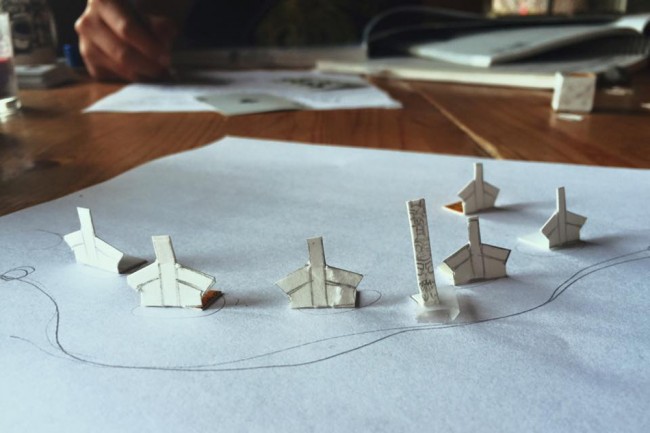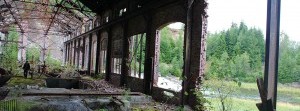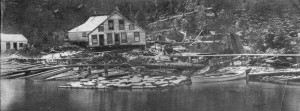
Haida Gwaii: The Board Game
Navigating turbulent seas in search of fish; warring with neighbouring families and villages; displaying your wealth and power through totem poles and potlatches. These are just a few elements of everyday life for the pre-contact Haida people, and now the inspiration for a Haida Gwaii strategy board game.
Nang K’uulas, or Patrick Shannon, developed the first version of his Haida Gwaii game during while staying on T’aanuu, a Haida village site in Gwaii Haanas, as part of the Haida Gwaii Watchmen program. Watchmen spend months at a time in the park, where there is little connection to the outside world other than the people who come to visit.
“Being immersed in a place that your family once lived and being surrounded by the energy of all those that came before, truly rooted me for the first time in my life,” says Shannon.
Without the distractions of internet, TV, or cell service, Shannon spent much of his time delving into the cabin’s library, learning more about the history, stories, and the many villages that once dotted every shoreline of Haida Gwaii. This newly-gained knowledge inspired Shannon’s creative side. “By sunset, in my sketchbook, I had the beginnings of a board game.”
With little to work with by way of materials, Shannon gathered up what he could find around the cabin to develop a first edition. A single pencil, an empty cereal box, a repurposed deck of cards, a stack of leftover pamphlets from 2013’s legacy pole raising, and rocks were used for the original game pieces. “On several occasions, I had to barter with visitors for more supplies,” says Shannon. “It made me feel very old school Haida.”
Once construction was complete, Shannon began beta testing with his fellow Watchman Nick Gladstone. “I knew that if he got bored, then I better make the game better,” says Shannon. Through these early trials, the game evolved into a fully-fledged Haida Gwaii strategy game. The game, called by its working title, “The Village People,” is built around the traditional practices and ways of life of the Haida people, and uses a board directly inspired by Haida Gwaii’s geography and waterways. Players begin the game as a Haida family in a time before contact, and start with a randomly selected village. The goal of the game is to become the most respected family by trading, expanding your villages, building longhouses and totem poles, gathering resources, warring, and potlatching.
It’s been two years since Shannon sketched out the original prototype at T’aanuu, and in that time it has been played over 25 times. “Each time the game has been played, it’s evolved,” says Shannon. “Input from other players, unexpected scenarios, and donated game pieces have shaped it into something that is just so cool to play, and it gets better each time.”
As the game evolved, Shannon has explored its potential as a teaching tool for schools and the general public alike. With hopes to one day develop the game in partnership with Haida Gwaii language authorities, the game could be a beginner’s gateway to the Haida language. “I would also like to provide information on historic villages, highlighting the clans and history of each place,” he says.
“The Village People” will continue to be tested until the mechanics are fully worked out, and then Shannon is planning to self-finance and produce a limited run of copies to go to schools, and be made available for purchase.
“I just want to complete it and see how the response is from the community,” says Shannon. “Making sure that it’s respectful and supported would be vital if I were to ever go larger with it, but the potential is there.”
— Pete Moore
Northword will be following this project as it progresses; check in on our website, or if you have any questions or want to get in touch, you can reach out to Shannon at patrick@innonative.ca.



